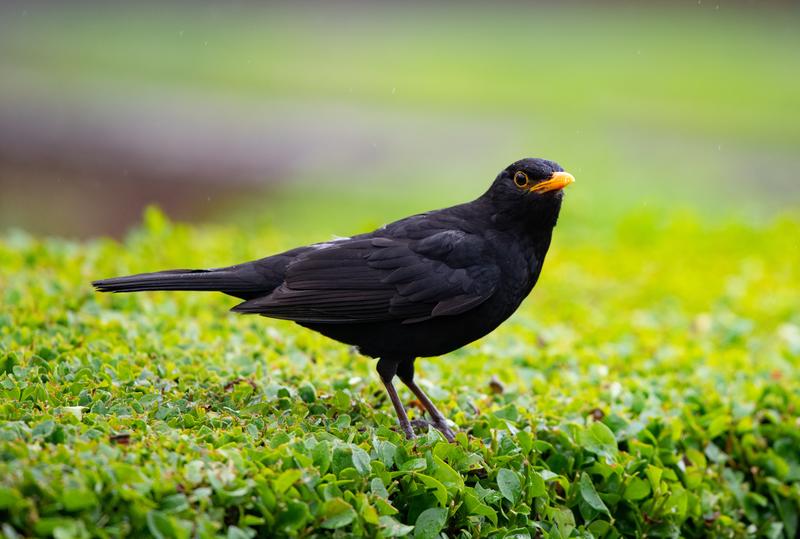Campylobacter Jejuni in Wild Birds
Genomic data is used by scientists and doctors around the world to respond to the threat of infectious diseases. In this series of blog posts, we’ll highlight research carried out by our group that uses genomic data to study disease-causing bacteria. The discoveries you are making through the Genome Detectives project will help us carry out more studies like these in the future!

This post discusses research into Campylobacter jejuni found in the gut of wild birds, looking at the evolutionary relationships between variants found in different host species and at different geographical locations. You can read the full scientific paper “Marked Host Specificity and Lack of Phylogeographic Population Structure of Campylobacter jejuni in Wild Birds” (Griekspoor, et al., 2013), here.
Campylobacter in different host species
In humans, gut infection by Campylobacter species such as Campylobacter jejuni is the most common cause of bacterial food poisoning1. However, Campylobacter is also found in the gut of many other animal and bird species, where it is part of the natural gut microbiome rather than a cause of disease. Transmission from animals to humans, leading to human disease, mainly occurs by eating raw or undercooked poultry or meat. Despite the public health importance of Campylobacter, the possibility of transmission from wild animals and birds into domestic livestock, and so into humans, is understudied.
Sharing genes between variants
There are a range of subtypes of Campylobacter jejuni (C. jejuni), referred to as sequence types or variants, each of which is found in a single or in a range of host animal species. Variants that are found in a range of host animals are known as ecological generalists, while those only found in a single host species are known as ecological specialists.
Different C. jejuni variants can have different genetic adaptations, which allow them to survive and thrive in their specific host species. If these genes move into different variants, biological traits such as transmissibility (how well the bacteria can spread between individuals) and virulence (the damage to a host that a disease causes) may be affected, which could have significant impacts on human disease. It is therefore important to understand to what extent variants in wild animals can share genes with those found in livestock or humans.
Study sampling methods
Research into the structure of Campylobacter jejuni populations at a genetic level has mainly looked at variants from humans and livestock. To investigate population structure and host adaptation more broadly, this study investigated almost 1,000 C. jejuni samples taken from wild bird hosts in Europe and Australia, and compared these to ~1,000 samples taken from human and livestock hosts.
To characterise which Campylobacter strains were present, Griekspoor and colleagues collected samples of animal faeces and used PCR to extract Campylobacter DNA. PCR (polymerase chain reaction) is a laboratory technique that amplifies (produces millions of copies of) a specific segment of DNA. Faecal samples can contain a mix of DNA from different gut microorganisms, environmental microorganisms, and from the host animal. PCR is used to produce a higher concentration of specific target segments of DNA from this mixed sample, in this case C. jejuni DNA, which means the target DNA can then be sequenced.
In this study, DNA sequences from seven C. jejuni ‘housekeeping’ genes (genes found in all Campylobacter cells, required for basic cell functions) were sequenced and then used to determine variants. This method of strain characterisation is known as multilocus sequence typing (MLST).
Campylobacter in wild birds
The seven C. jejuni gene sequences from each sample were grouped by host species and geographical location, and these subsets were then used to create a phylogenetic tree (shown below). A phylogenetic tree, or phylogeny, is a branching diagram showing the evolutionary relationships between the different strains. The lines show how the samples are related in terms of evolution, with shorter lines meaning the samples are more closely related.

The phylogeny created in this study shows that variants found in different wild bird species are genetically distant from each other (so not closely related in terms of evolution). The wild bird variants are also distinct from variants found in humans and livestock (which are closely related to one another). This suggests that transmission does not often occur between wild birds and livestock or humans. By searching for the wild bird C. jejuni variants in the PubMLST bacterial genomes database, the researchers also showed that most of these variants have not been associated with human disease in previous studies, which supports this conclusion.
Importance of host species vs geographical location
The phylogenetic tree suggests that host species has more of an impact on the Campylobacter jejuni variants present than the geographical location does. For example, variants from blackbirds sampled in Sweden and Australia are more closely related than variants from the different wild bird species sampled in Sweden. This could indicate that different C. jejuni variants from wild birds have specific adaptations for a single host species, meaning they are ecological specialists. In contrast, the close relatedness of variants found in livestock (cattle, chickens, and sheep) and humans suggests these variants are more likely to be generalists – this makes sense with the knowledge that most human infections are from poultry or meat.
Summary
Analysis of the evolutionary relationships between Campylobacter jejuni strains suggests that host species has more of an influence on which variants are present than geographical location. Variants found in wild birds appear to be specifically adapted to each host species, and so wild birds do not appear to be a source of disease-causing strains found in livestock animals or in humans.
If you are keen to know more detail about this study on Campylobacter in wild birds, you can read the paper by Griekspoor, et al., here.
1. World Health Organisation, 2020.
Images (in order): Derek Braithwaite via Unsplash, 2020; Griekspoor, et al., 2013.


